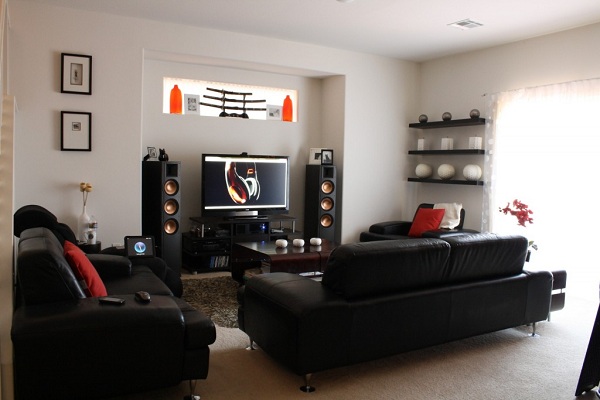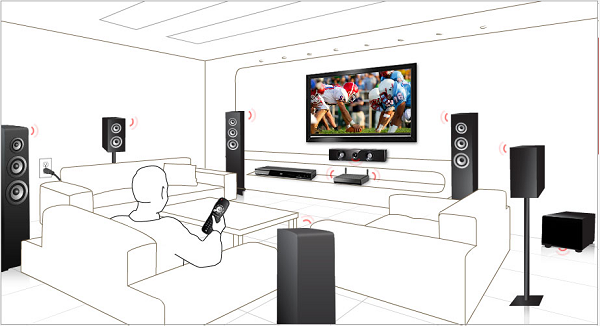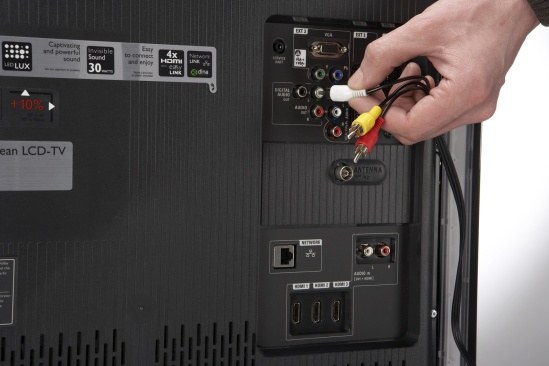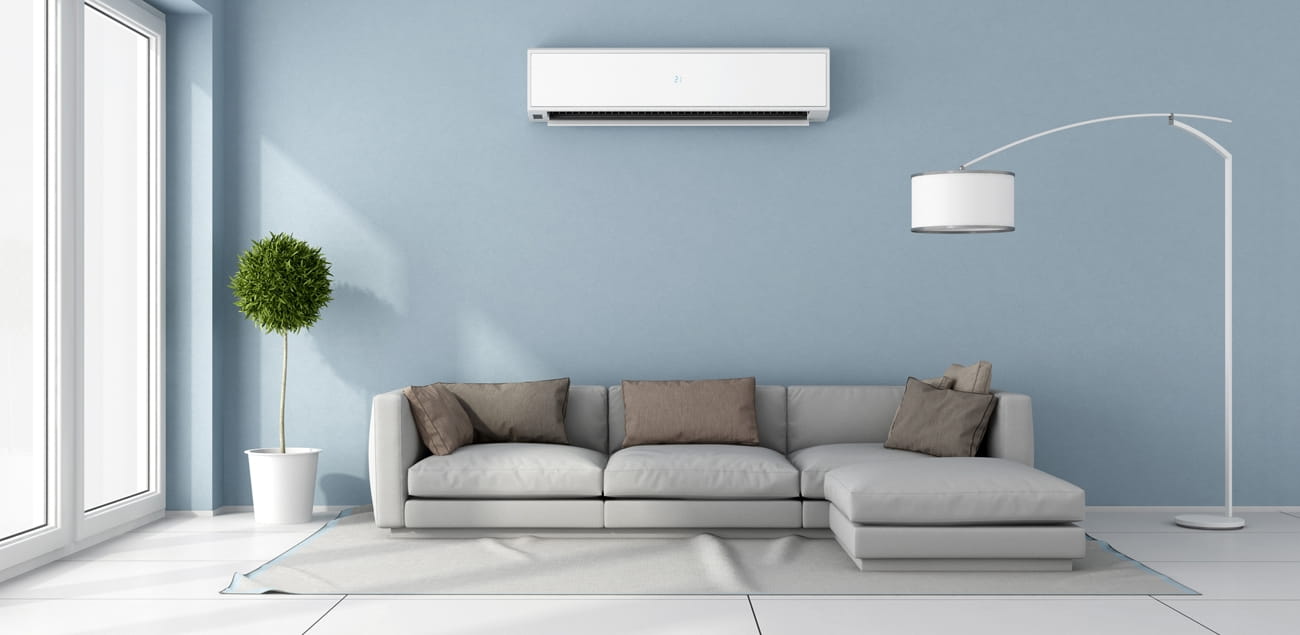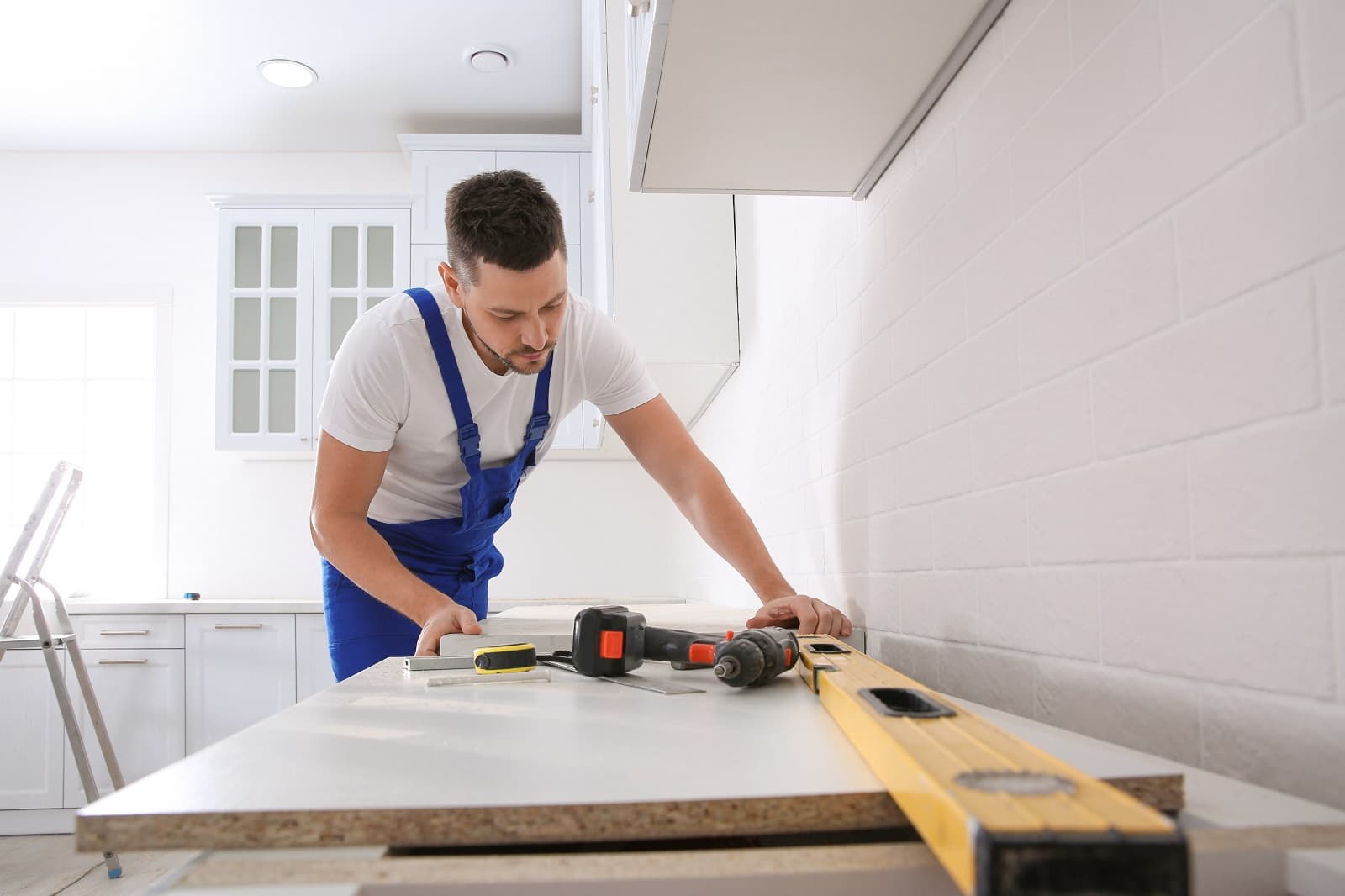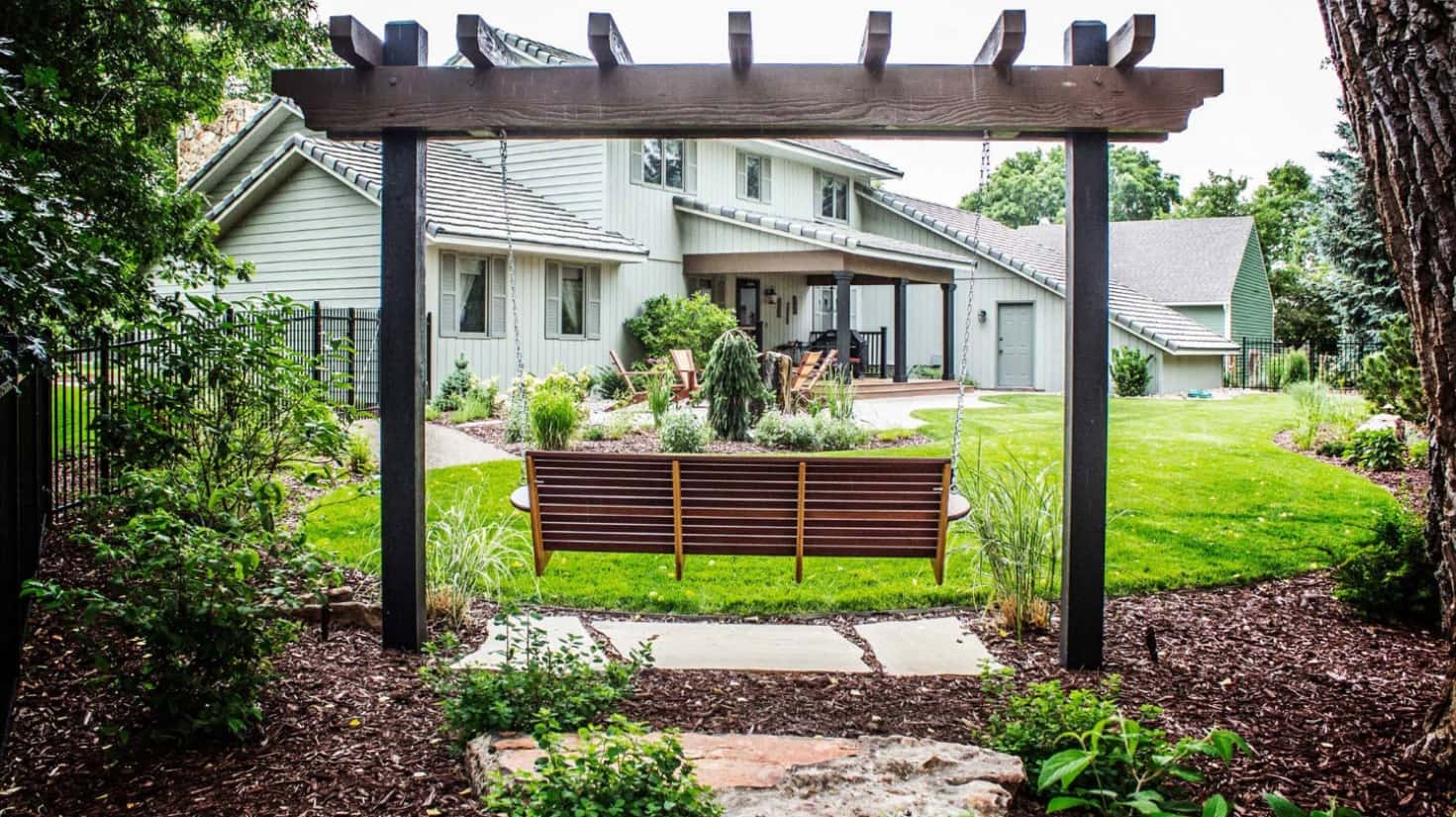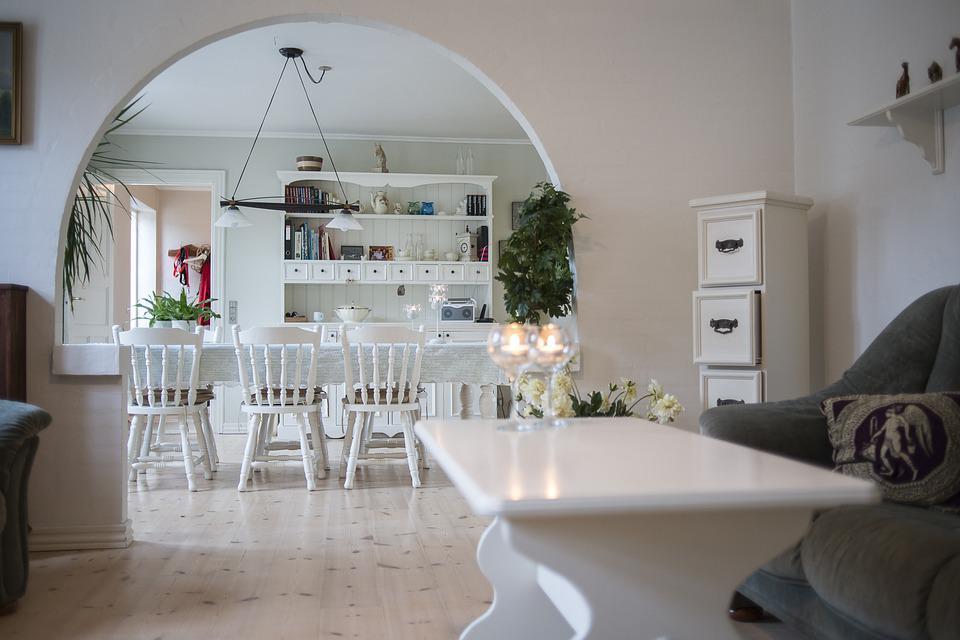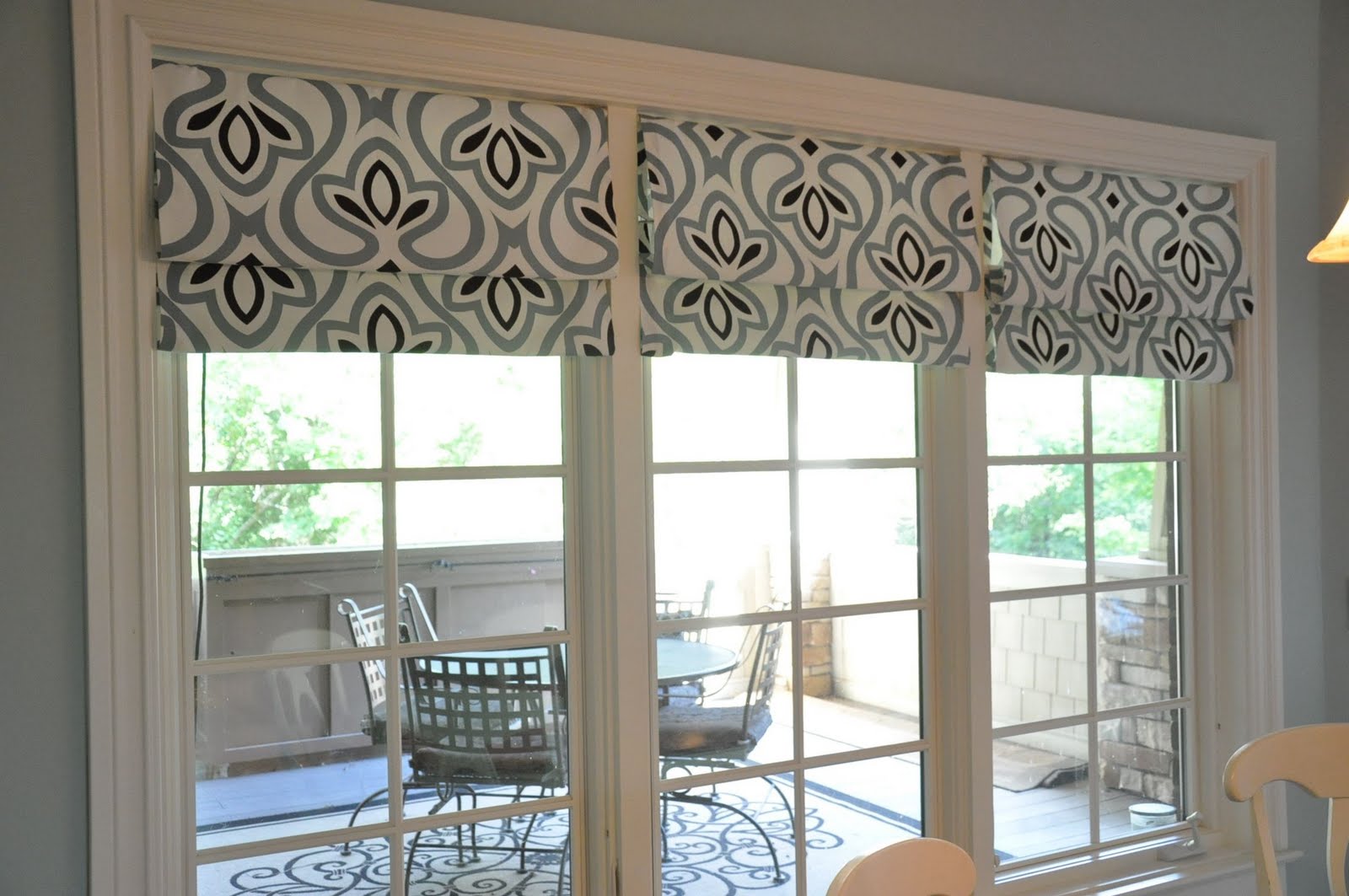Everyone wants to provide the most comfortable conditions for relaxing in their home. Having a good weekend is watching your favorite movies. Home cinema installation will help to create an appropriate atmosphere, which will allow you to feel strong emotions and enjoyment. In order for the hopes to be justified, and to be able to enjoy viewing, it is important to find a place for each component of the equipment.
Content:
- Rules for the placement of technical equipment
- Features and varieties of acoustics
- Connection Methods
- Hardware Setup
Rules for the Placement of Technical Equipment
Before connecting a home theater, you need to find a suitable location for all components of the equipment. Points to pay attention to:
- The screen size should be selected based on the area of the intended premises where it will be placed. Whatever good acoustics is, a small screen will not give the desired effect.
- Installation of a subwoofer, receiver, DVD player is carried out in the center, directly under the television monitor.
- A television or projector must be at the eye level of the audience.
- Acoustic components must be positioned so that people are in the center.
Features and Varieties of Acoustics
Hardware installation varies by model. Acoustics is selected by personal preference and the cosmetic possibility of its successful placement. It can be mounted on walls, decorated on racks and shelves, or placed on the floor.
Given the peculiarity of sound propagation, the most successful installation will be on the floor. Thanks to the built-in speakers, the sound fills the entire space evenly.
For small rooms and standard apartments, compact models can be used. As a rule, one loudspeaker is installed on the floor in the center, and the remaining four are mounted on the walls. The number of loudspeakers for large living rooms can be up to 7 pcs. In this case, more surround sound is provided, allowing you to convey the atmosphere of a large cinema hall.
Home cinemas with a large number of acoustic components must be supplemented with a player, as there will be few decoders. For the effective and universal operation of the equipment, it is better to select a player, which will include:
- the ability to play any video and audio formats,
- playback from flash drives.
Connection Methods
Having picked up the optimal configuration of the equipment, having determined the location of each element, the connection stage begins. All components of a home theater are connected to the receiver, which provides power to the speakers. It receives and transmits radio signals. The receiver consists of a tuner, a power amplifier, and multi-channel decoders. These are the “brains” of the home theater system, on which the connections of all elements of equipment are concentrated.
Installation of equipment includes several stages.
- Connecting a home theater to a TV. For these purposes, depending on the plug-in output, you may need the following type of cable: composite standard connector, RGB, for S video, and one with HDMI output.
- Connection of the surge protector.
- Connection of acoustics and central speaker. The main speaker is installed in the center, near the screen, the side speakers should be at an angle of 45 º to the viewer.
- If DVD and Blu-ray players are included, the connection is also made to the central unit.
- The final stage is the installation of plugs on all electrical cords and connection to an outlet.
Hardware Setup
Installation and connection of all parts of the equipment implicate the setting up of a home theater. For this purpose, the receiver menu is used. It will be more convenient to set parameters using the remote control.
First of all, bass sounds are tuned on the front and back of the acoustics. If it is impossible to arrange the elements in the hemisphere, on the central loudspeaker, which is farthest from the viewer, it is necessary to set the mode with sound delay. To optimize surround sound, a delay of 1 millisecond is set on speakers located no closer than 30 cm to each other.
The next step is to determine the volume level, which will be more acceptable for work on an ongoing basis. The level can be fixed only on the central loudspeaker, but you can also adjust all the speakers at once.
For the final adjustment of the settings, it is better to include a familiar episode of the video. This will provide the most suitable sound.
All the equipment is supplied with an instruction manual with a detailed step-by-step installation. The names and colors of the cable are described, as well as the plug-in connection outputs. It is important to do everything sequentially and follow the official recommendations.

